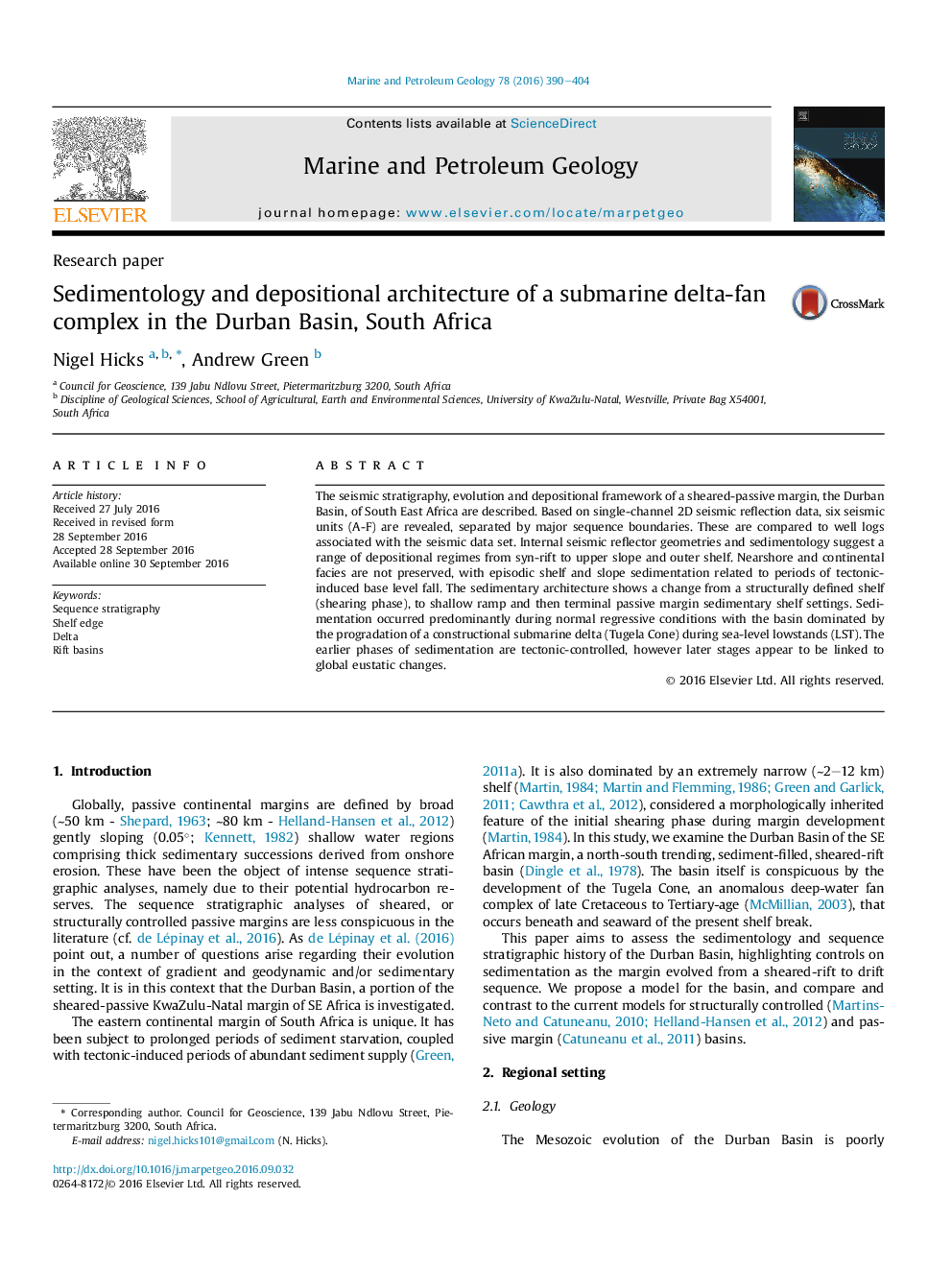| Article ID | Journal | Published Year | Pages | File Type |
|---|---|---|---|---|
| 6434395 | Marine and Petroleum Geology | 2016 | 15 Pages |
â¢Analysis of sedimentological and seismic data obtained within the Mesozoic Durban Basin, eastern margin of southern Africa.â¢Depositional evolution is represented by six individual sedimentary successions separated by regional sequence boundaries.â¢Recognition of multiple phases of margin growth.â¢Defined sedimentation styles include, syn-rift structurally-defined, incipient ramp, and passive margin sedimentary shelf.
The seismic stratigraphy, evolution and depositional framework of a sheared-passive margin, the Durban Basin, of South East Africa are described. Based on single-channel 2D seismic reflection data, six seismic units (A-F) are revealed, separated by major sequence boundaries. These are compared to well logs associated with the seismic data set. Internal seismic reflector geometries and sedimentology suggest a range of depositional regimes from syn-rift to upper slope and outer shelf. Nearshore and continental facies are not preserved, with episodic shelf and slope sedimentation related to periods of tectonic-induced base level fall. The sedimentary architecture shows a change from a structurally defined shelf (shearing phase), to shallow ramp and then terminal passive margin sedimentary shelf settings. Sedimentation occurred predominantly during normal regressive conditions with the basin dominated by the progradation of a constructional submarine delta (Tugela Cone) during sea-level lowstands (LST). The earlier phases of sedimentation are tectonic-controlled, however later stages appear to be linked to global eustatic changes.
